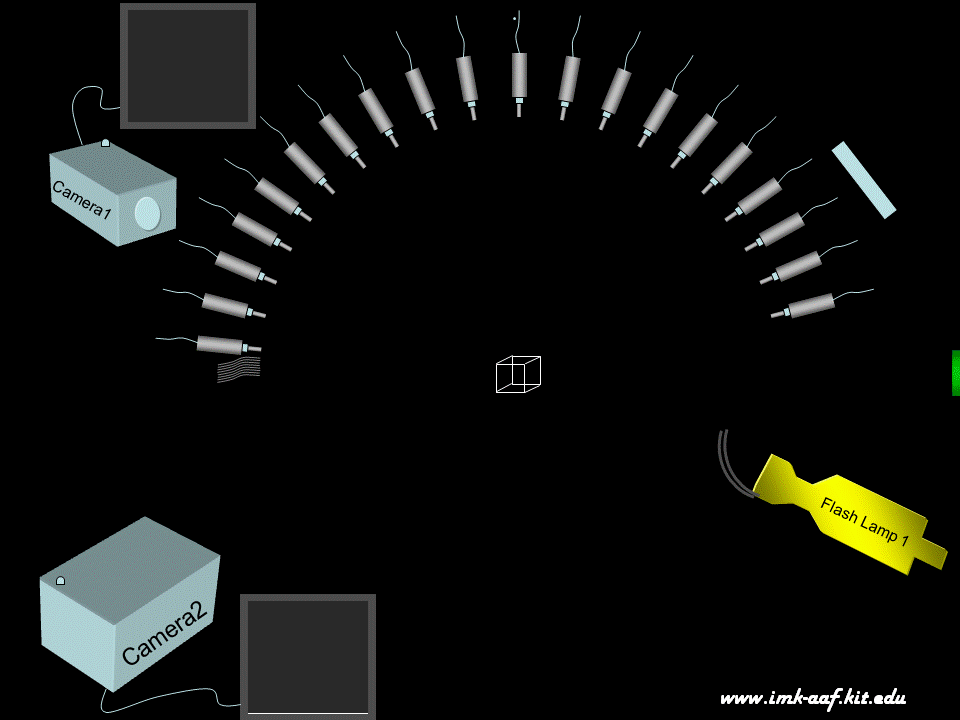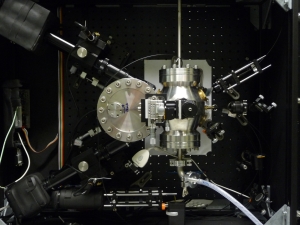PHIPS-AIDA
The PHIPS (Particle Habit Imaging and Polar Scattering) probe is the first single-particle instrument that measures simultaneously the particle geometry, the particle orientation, and the light scattering diagram of the particle. The laboratory version of the instrument (PHIPS-AIDA) is routinely operated in ice cloud characterization studies at the cloud chamber AIDA of KIT and is currently redesigned for in situ aircraft applications (PHIPS-HALO).

The imaging and scattering parts of PHIPS are linked by a particle detection and triggering system that ensures that only those particles are recorded which are in the scattering centre and in the field of view and depth of field of the stereo imaging system. PHIPS-AIDA was tested in series of ice cloud characterisation campaigns which were conducted in the cloud chamber in the temperature range from -5°C to -70°C. In a series of experiments small externally generated seed ice crystals were grown in AIDA at distinct temperature and saturation ratio conditions. For these experiments the long known ice morphology diagram with the temperature dependent morphology changes and the supersaturation dependent structural complexity could clearly be reproduced by PHIPS.
Structural details like hollow crystals, crystals with inclusions, and crystals with  stepped surfaces (Hopper crystals) could be resolved by PHIPS-AIDA. Moreover, the advantage of stereo-imaging in terms of habit classification and particle orientation deduction could be demonstrated. The scattering function measurement reveals ice particle orientation dependent specular reflection peaks which might contain information about the surface roughness.
stepped surfaces (Hopper crystals) could be resolved by PHIPS-AIDA. Moreover, the advantage of stereo-imaging in terms of habit classification and particle orientation deduction could be demonstrated. The scattering function measurement reveals ice particle orientation dependent specular reflection peaks which might contain information about the surface roughness.
For further information please contact
Dr. Ahmed Abdelmonem or Dr. Martin Schnaiter
